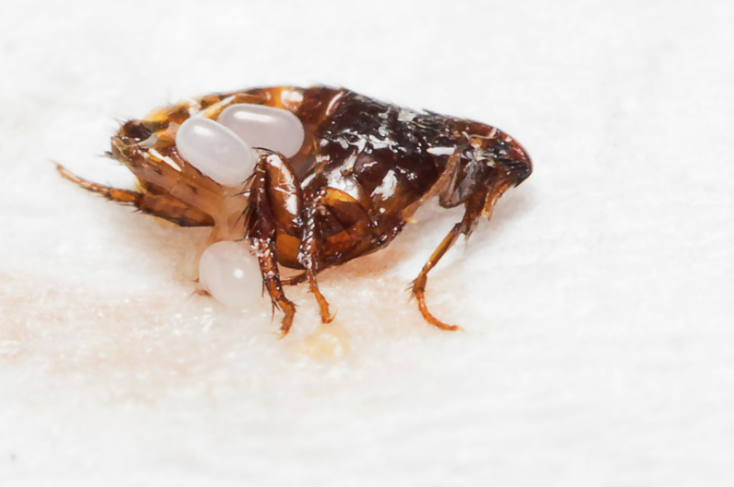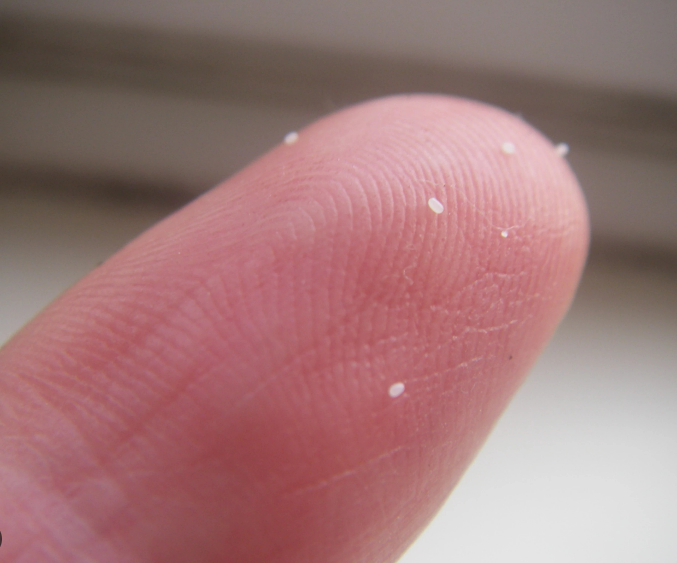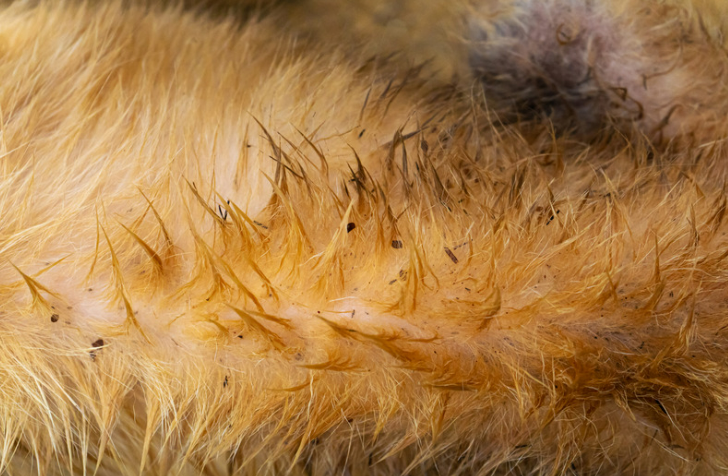Introduction: Understanding Flea Biology
Welcome to the intricate world of flea biology—a subject crucial for pet owners and households alike. Fleas, those persistent pests that affect our furry friends and homes, undergo a lifecycle that’s both fascinating and frustrating. Understanding the frequency of flea egg hatching is not just academic; it’s the foundation of effective infestation prevention. The lifecycle of a flea is a complex journey, and it all begins with an egg. But just how often do these minute potential nuisances transform into fully-fledged adults ready to leap onto their next host?
Let’s hatch the facts: a single female flea can lay up to 50 eggs per day. These eggs are invisible to the naked eye, smooth, and pearl-like, yet they’re the starting point of what can become a full-blown infestation. Thriving in warm, humid conditions, flea eggs incubate, and under the right circumstances, can commence hatching within a mere 36 to 48 hours. This rapid reproduction rate is what makes understanding and breaking the flea life cycle imperative for effective control.

Within this post, we’re delving deep into the frequency of flea egg hatching. By grasping this critical phase in the flea life cycle, you’ll be equipped to disrupt the proliferation of these pests, safeguarding your home from their unwelcome presence. With our expertise, say goodbye to guesswork and hello to a science-backed battle plan against fleas.
To bolster your knowledge, The University of Kentucky’s College of Agriculture, Food and Environment provides a deep dive into the life stages of fleas, supporting our discussion with vetted research. As we navigate through the lifecycle, remember that knowledge is power—the power to preempt, protect, and preserve your peaceful coexistence with your beloved pets and within your homes, free from the annoyance of flea bites.
Unveiling the Hatch: The Flea Egg Cycle
In the realm of flea control, knowledge of the egg stage is a powerful tool. Flea eggs are the starting blocks of infestation, representing a future generation of itch-inducing nuisances. They are incredibly resilient and deceptively quiet in their onset. It’s these tiny, pearly specks that demand our utmost attention if we’re to keep the flea population in check.
Characteristics of Flea Eggs
Flea eggs are marvels of pest endurance. Unlike the adults, which are easier to spot and treat, these eggs are translucent and barely the size of a grain of sand. Despite their size, their ability to lay dormant and evade common treatments makes them formidable. They don’t remain on your pet but fall off into your environment — your carpets, bedding, and furniture — setting the stage for a new wave of infestations.
Optimal Conditions for Flea Eggs to Hatch
Temperature and humidity are the conductors of this hatching symphony. Flea eggs require a warm and moist environment to develop, ideally between 70 to 90 degrees Fahrenheit and 70% relative humidity. In such climates, the hatching process is accelerated, allowing for a faster transition from egg to larva.
Average Time Frame for Flea Eggs to Develop
Time is of the essence with flea eggs. In optimal conditions, development from egg to larva can occur in as little as two days. However, this period can extend up to two weeks if conditions are less than ideal. This window provides a critical opportunity for intervention, one where timely action can significantly reduce the chances of a flea infestation taking hold.

Understanding the enemy’s strategy is the first step in winning the war against fleas. Armed with this knowledge of flea egg characteristics and development, homeowners and pet owners can prepare their battle plans. A thorough approach includes not just treating the pet but the environment as well — a topic we’ll explore further as we delve into intervention strategies that can stop these pests in their tracks.
Factors Influencing Flea Egg Development
The successful hatching of flea eggs, though undesirable, is a marvel of nature’s adaptability, heavily influenced by environmental factors. Recognizing what accelerates or hinders this process is key in the fight against flea proliferation. Let’s explore the variables that affect flea development and hatch rate.
Temperature and Humidity’s Role in Egg Hatching
The hatching of flea eggs is not a matter of chance but a response to precise environmental cues. Fleas have evolved to sense the warmth and moisture that herald the presence of hosts. Temperatures between 70 and 85 degrees Fahrenheit, paired with a relative humidity of about 70%, create an ideal nursery for flea eggs. Deviation from these parameters can delay hatching, offering a strategic point of control.
The Impact of Environmental Conditions on Lifecycle
It’s not just the micro-environment around the egg that matters but also the larger environmental conditions. Seasonal changes profoundly affect the life cycle of fleas, with peak hatching periods typically occurring in summer. However, in our climate-controlled homes, fleas have found a way to circumvent nature’s limits, turning indoor spaces into year-round breeding grounds.
How Indoor vs. Outdoor Settings Alter Hatching Timelines
The contrast between indoor and outdoor environments can’t be overstated. Outdoors, the unpredictability of weather and temperature can extend the incubation period of flea eggs. Indoors, however, the steady conditions of a home can lead to more consistent and rapid hatching cycles. The understanding that our comfortable homes can double as flea incubators is a crucial insight in managing infestations.
By factoring in these environmental influences, we can create targeted strategies to disrupt the flea life cycle. This knowledge forms the basis for our next discussion: how to intervene effectively and maintain an environment that deters flea development. From regular household maintenance to strategic temperature and humidity control, we will unpack the tactics that turn your home from a flea haven into a hostile zone for these pests.
Intervention Strategies: Halting the Hatch
Taking the fight to the fleas means interrupting their life cycle before it can gain momentum. With an understanding of the conditions that foster egg hatching, we can craft a targeted approach to prevent these pests from maturing. Let’s dissect the intervention strategies that can halt the flea lifecycle in its tracks.
Preventative Measures to Control Flea Populations
An ounce of prevention is worth a pound of cure, especially when it comes to fleas. Regular vacuuming can remove a significant number of flea eggs and larvae from your environment. Flea control products, used preemptively, can discourage adults from laying eggs. Additionally, treating pets with veterinarian-approved flea control medications creates a hostile environment for any flea that dares to hop on.
Best Practices for Creating Unfavorable Conditions for Eggs
To keep flea eggs from hatching, maintaining a cool and dry home can be effective. Using dehumidifiers to reduce indoor humidity and air conditioners to lower temperature hinders egg development. Washing bedding and pet areas frequently at high temperatures can also destroy eggs, ensuring they never hatch.
Effective Treatments to Target Flea Eggs
While adult fleas are often the primary target for treatments, products that contain insect growth regulators (IGRs) specifically target the eggs and larvae. These IGRs work by mimicking natural growth hormones of insects, thus preventing the eggs from developing into biting adults. For comprehensive coverage, a combination of spot treatments, sprays, or foggers containing IGRs can be employed throughout the home, paying close attention to baseboards, furniture crevices, and below cushions, areas where eggs are likely to be hidden.
These strategies mark the beginning of a vigilant practice in flea control. Consistent application of these methods forms a barrier, deterring the next generation of fleas from ever taking hold. But the war against fleas isn’t won with a single battle. It’s a continuous campaign that requires regular monitoring and maintenance, which we will examine next, ensuring your living space remains a fortress against flea infestation.
Eternal vigilance is the price of flea-free living. A robust flea control plan doesn’t stop with initial treatment; it’s an ongoing process. By establishing regular monitoring and maintenance routines, you can detect and address flea activity before it becomes a full-blown infestation. Let’s delve into the best practices for maintaining a flea-resistant environment.
Regular Inspection Techniques

Conducting routine checks is critical in early detection. Use a flea comb on your pets over a white towel to spot any fleas or flea dirt that may fall off. Inspect your pet’s bedding and favorite areas regularly, looking for signs of flea activity. Carpets and dark corners of the home can harbor eggs, necessitating thorough inspections.
Long-term Strategies for Flea Control
Preventive flea treatments for pets should be administered year-round, not just during peak seasons. In your home, integrate flea-repelling practices into your regular cleaning routine. This includes steam cleaning carpets and upholstery, which can kill flea eggs and larvae. Seal gaps in flooring and baseboards to eliminate flea hiding spots.
Importance of Consistency in Flea Prevention Methods
The key to successful long-term flea control is consistency. Schedule regular treatments and cleaning, making them as routine as any other household task. Keep an eye on humidity levels and temperature, especially in the warmer months, to avoid creating a conducive environment for flea development.
By incorporating these vigilant practices, you’re not just reacting to flea problems, you’re actively preventing them. Regular monitoring and maintenance are your strongest allies in the ongoing effort to keep your home flea-free. In the following section, we’ll conclude our comprehensive guide, reiterating the importance of staying ahead in the lifecycle of fleas and ensuring the comfort and health of both your family and your pets.
Conclusion: Staying Ahead of the Flea Life Cycle
In conclusion, understanding the nuances of flea egg hatching is pivotal to maintaining a flea-free environment. The battle against fleas is won through a combination of knowledge, vigilance, and consistent application of preventative measures. By fostering conditions unfavorable to flea development and employing targeted interventions, we can safeguard our homes and our pets from the threat of infestations.
Summarizing Key Points for Effective Flea Control
To encapsulate, remember that controlling temperature and humidity is fundamental, regular cleaning and the use of IGRs are powerful tactics, and treating pets with preventative medicine is an essential defense line.
Continuing Education on Flea Prevention
For those committed to ongoing education, additional resources are invaluable. Websites like the Centers for Disease Control and Prevention provide comprehensive information on fleas and flea-borne diseases. They offer guidance that complements the strategies outlined here.
Final Thoughts on Flea Management
Effective flea control is an enduring commitment. It’s about creating an inhospitable environment for fleas at every stage of their life cycle. Armed with the insights and strategies from this guide, you’re well-equipped to prevent the discomfort and health risks associated with fleas. Regularly revisit these practices, refine your approach, and stay informed on the latest in flea prevention. With these measures in place, you can enjoy a peaceful, flea-free life for you and your pets.